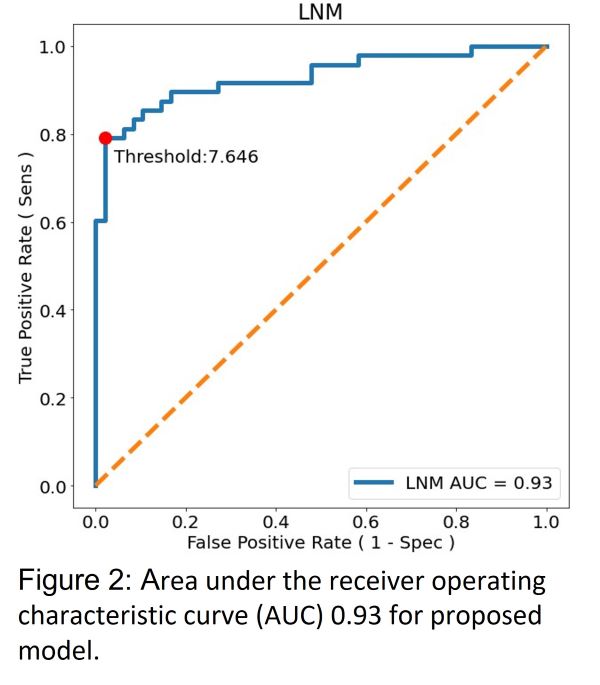3D-Resnet: a model for lymph node metastasis recognition from HNSCC on pre-treatment tomography
PD-0405
Abstract
3D-Resnet: a model for lymph node metastasis recognition from HNSCC on pre-treatment tomography
Authors: Yihui Lin1, ChiehTing Lin2, HeYuan Hsie1, JenJee Chen2, WeirChiang You1, YuWei Hsu3, ChiaHui Lin4
1Taichung Veterans General Hospital, Department of Radiation Oncology, Taichung, Taiwan; 2National Yang Ming Chiao Tung University, College of Artificial Intelligence, Tainan, Taiwan; 3Taichung Veterans General Hospital, Cancer Prevention and Control Center, Taichung, Taiwan; 4Taichung Veterans General Hospital, Department of Orthopedics, Taichung, Taiwan
Show Affiliations
Hide Affiliations
Purpose or Objective
Head and neck squamous cell carcinoma (HNSCC) is a global major cancer, especially in southeast Asia. The pre-treatment evaluation of lymph node status remained a challenge for oncologists. To build a deep learning neural network for HNSCC lymph node recognition from pre-treatment tomography and avoid human specialist bias, we designed this study.
Material and Methods
We designed a retrospective study, collect newly diagnosed HNSCC patients from 2019-2021, with available pre-treatment computed tomography (CT) scans and pathology report to build ground truth of the LNM status.
We experiment 7 three dimensional convolutional neural networks (3D-CNNs) with two different input images s. We compared classical 3D-CNNs and 3D-Resnets to find out best architecture for LNM recognition.
Results
From 2019-2021, 158 patients with 158 CT scans meet our criteria. The median duration from CT scan to surgery was 10 days (range: 1–28 days). Following pathologic correlation with CT scans, 350 lymph nodes were segmented in total (range: 1–8 per patient): 241 negative nodes, 111 nodes contained tumor cells.
Along the 7 examined models, dual-pathway 3D-Resnet (Figure 1), input image -preserved pathway containing 18 layers and -invariant pathway containing 10 layers yielded the best performance. The prediction area under the receiver operating characteristic curve (AUC) achieved 0.93 (Figure 2), accuracy 0.89, sensitivity 0.80, specificity 0.99, positive predictive value (PPV) 0.97 and negative predictive value (NPV) 0.82.


Conclusion
The dual-pathway 3D-Resnet, 18-10 layers, can help HNSCC pre-treatment staging. Further external validation is needed to evaluate the model robustness.
This work was supported in part by the National Science and Technology Council, Taiwan under Grant of NSTC 111-2634-F-006-012